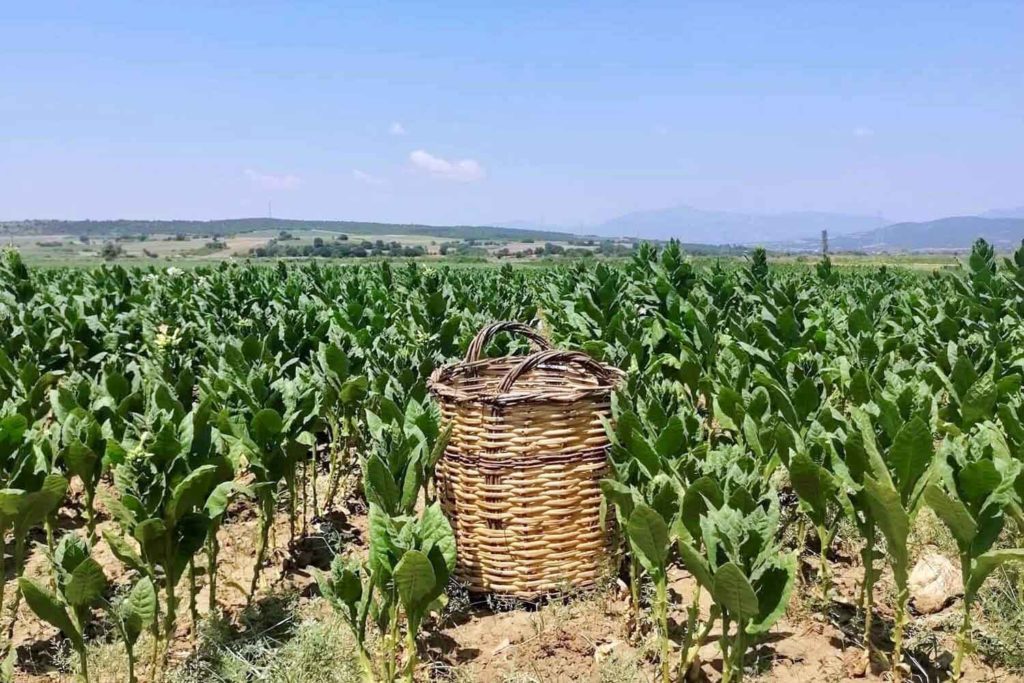Rare Spice
- Leaf Print Edition
- January 1, 2022
- 0
- 0
- 5 minutes read


Oriental tobacco production has hit a record low, but crop quality is higher.
By Stefanie Rossel
After peaking at 202,000 tons in 2014, oriental tobacco production has seen many ups and downs. This year marked a new low of 128,000 tons, according to International Tobacco Growers’ Association analyst Ivan Genov, citing data from Universal Leaf. Nonetheless, in 2020, Turkey and Greece managed to increase their export earnings from the crop by $6 million and $26 million, respectively, Genov noted.
According to Dora Gleoudis, managing director of Greek leaf tobacco exporter Nikos Gleoudis Kavex, the classical oriental variety grown in the Balkans, including the Turkish Izmir and Samsun varieties, accounted for approximately 92,0000 tons of the total volume. Gleoudis believes global supply and demand are balanced at current crop size levels.
Next to dark air-cured tobacco, oriental leaf has always been a low-volume niche. It is nevertheless an important variety as it provides tobacco blends with a distinct, spicy aroma. Oriental tobacco is cultivated in dry areas with little rain and lots of sun, which leads to a lower nicotine content compared to flue-cured Virginia (FCV) and burley styles. Classical oriental tobacco is grown mainly in Turkey, Greece, North Macedonia and Bulgaria. Thailand, India, Albania, the Commonwealth of Independent States countries and China also cultivate certain varieties.
In contrast to an FCV plant, which can have up to 30 large leaves, the oriental plant can grow up to 100 smaller and darker leaves. Harvesting and curing differs too: The crop is harvested mostly manually and then sun-dried for about a week, a process that contributes to retaining some of the natural sugars in the leaves. The hint of sweetness in oriental and its unique taste make it a key ingredient not only in American blend cigarettes but also in many roll-your-own and pipe tobacco brands as well as in shisha tobacco and heated-tobacco products.
A Labor-Intensive Crop
Kavex’ portfolio includes the main oriental varieties, including Basma and Katerini from Greece and Albania; Prilep and Yaka from Macedonia; Krumovgrad and North Bulgaria from Bulgaria, and Izmir and Samsun from Turkey. The recent drop in production volume was driven by a combination of weather and the aging of tobacco growers, among other factors, according to Gleoudis. “Young people still staying in their villages turn to other crops that are easier to handle,” she says. “Additionally, drought during the summer period has negatively affected the crop size.”
The quality of the current oriental crop, though, she points out, was higher than that of the previous crop, especially in North Macedonia. The Covid-19 pandemic did not have much of an impact on production, said Gleoudis, who is more concerned about the price of energy, which has skyrocketed in Europe.
Oriental leaf cultivation is known to be costly and labor intensive. Little machinery is used for planting and harvesting. It is estimated that it takes 120 manhours to 150 manhours to cultivate one acre of Greek oriental tobacco.
Recently, stakeholders have attempted to introduce more mechanization and automation into the cultivation process. A new oriental harvester, developed jointly by VIT and Philip Morris International, was trialed during the summer of 2020 (see “The Oriental Express,” Tobacco Reporter, January 2021). First tests showed that the machine, when used to harvest crops in four stalk positions, was able to harvest eight hectares of oriental tobacco or up to 12 tons of cured oriental tobacco during one season with only two people.
Whether such efforts will succeed remains to be seen. At press time, the new technologies in curing and harvesting were still at an experimental stage, according to Gleoudis.

